Mystery and romance are two words that come to mind when thinking of the Hanging Gardens of Babylon. It’s mysterious in that its existence is only known through descriptions in ancient Roman and Greek documents; to date, no physical archeological evidence has been uncovered. In fact, the exact location of this fabled ancient feat of engineering is uncertain. It is believed to have been built by the Neo-Babylonian King Nebuchadnezzar II for his wife, Queen Amytis, because she longed for the verdant, mountainous landscapes of her homeland—a romantic gesture indeed. The gardens were fabled to be lushly planted with species of her native landscape as well as trees and shrubs from faraway lands. Dripping vines were utilized to mask and soften the edges of the massive structural walls. In modern days, newly conceived landscapes often lack a sense of mystery, romance, and antiquity. Fast growing and adaptable in their functionality, evergreen vines can create gardens that feel mysterious, romantic, and mature beyond their age.
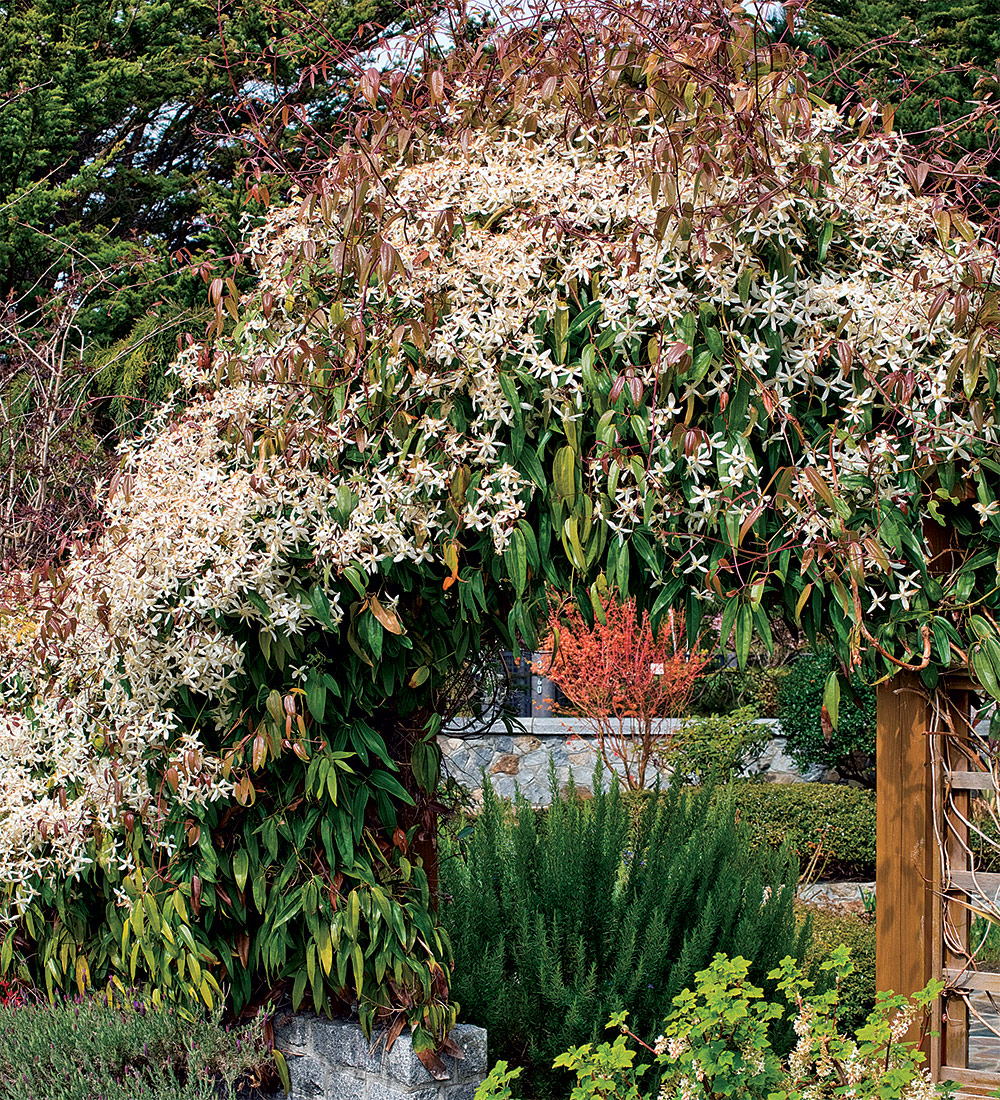
Evergreen clematis
Clematis armandii, Zones 7–9
Though it’s not widely known, evergreen clematis is a plant collector’s delight. Reaching heights of up to 30 feet, this vigorous self-twining plant has many outstanding ornamental characteristics. The foliage has a tropical appearance, which is a departure from most specimens within this genus. Elongated 5- to 7-inch-long leaflets are arranged in groupings of 3; each leaflet is leathery and dark green with a glossy sheen. Sweetly scented, three-inch white blooms emit notes of vanilla. Pruning should be delayed until after the spectacular floral display in late spring, when blooming occurs on the previous year’s growth. Flower buds will continue to develop and emerge for up to one month. Although less common, there are pink-flowering varieties available, such as ‘Hendersonii Rubra’ and ‘Apple Blossom’. This plant prefers full sun to partial shade and is deer resistant. Due to its vigorous nature, rich, evenly moist, and well-draining soil is preferred. A generous layer of organic matter covering the root system will help keep moisture even and the roots cool. Situate this unusual clematis near a walkway, open window, or outdoor seating area, where the fragrance and unique characteristics can be appreciated.
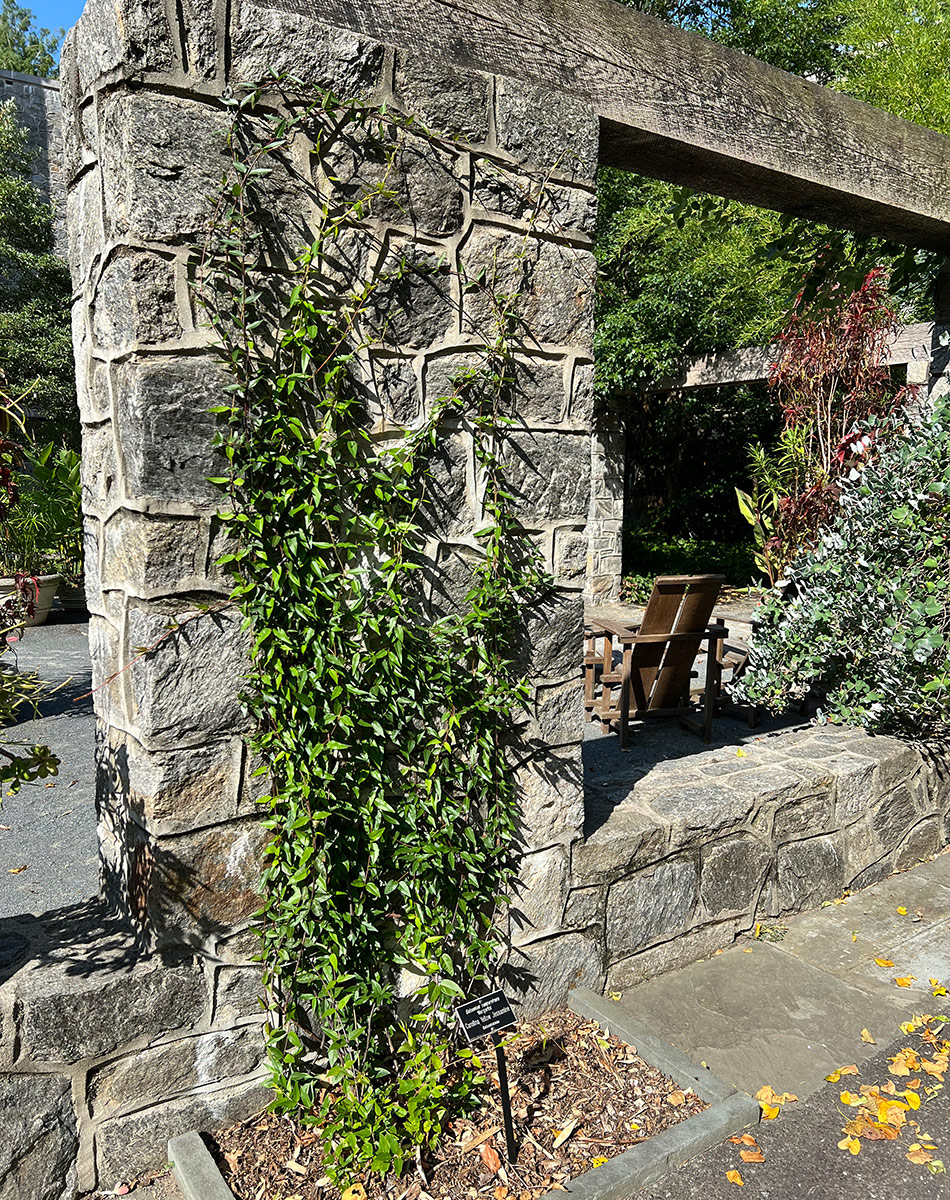
Carolina jessamine
Gelsemium sempervirens ‘Margarita’, Zones 7–10
Extremely heavily flowering, evergreen, attractive to pollinators, and adaptable, Carolina jessamine is deserving of more notoriety than it often receives. After all, it is the state flower of South Carolina, where it can be seen growing in its indigenous range. Its preferred growing conditions are moist, well-drained, fertile soil in full sun. However, I have seen it grown successfully in dry, poor soil conditions as well. Although not as vigorous in partial sun or shade, it will still perform well. Hardy in Zones 7–10, it bursts into bloom in late spring, exhibiting a profusion of bright yellow to gold tubular flowers that hummingbirds enjoy. Speaking of gold, as of 2005 it is a member of the Pennsylvania Horticultural Society’s Gold Medal Plant list. This is another one that blooms on old growth, so pruning should occur immediately after flowers fade. Although the evergreen foliage, which often takes on bronze tones in winter, is persistent, sometimes stems can become bare at the base. If this occurs, the entire 10- to 20-foot plant can be cut back hard. It will send out new stems with lush new foliage within the same growing season.
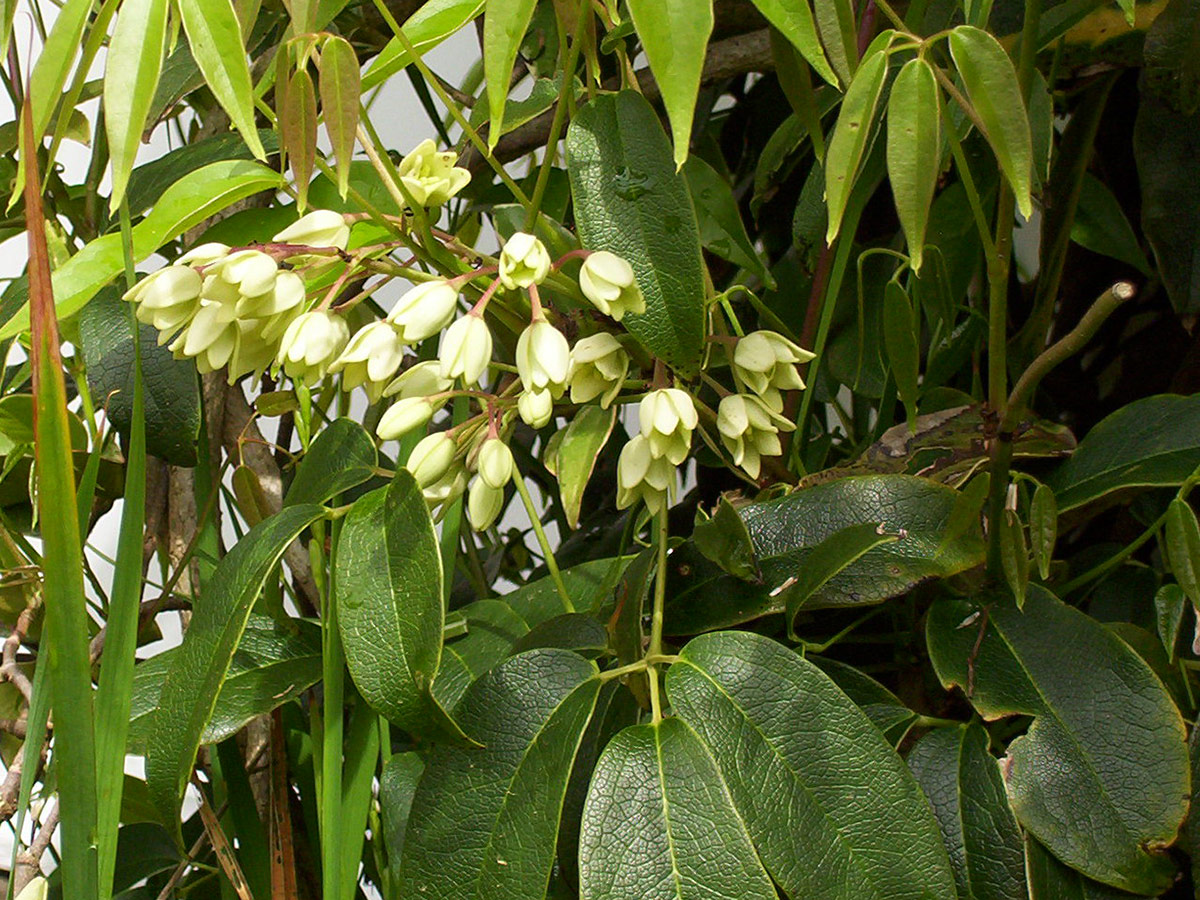
Sausage vine
Holboellia coriacea, Zones 6–11
Ornamental plants that are visually attractive in all four seasons but can also delight our sense of smell and taste are winners in my book. The common name of sausage vine is a nod to the size and shape of the peculiar pink to purple fruit as well as the edible nature of the white jelly inside the fruit. This fast-growing broadleaf evergreen vine is one that prefers a shady or semi-shady location with soil that remains consistently moist. An Akebia relative, it can be equally vigorous as its cousin. It is not uncommon for it to reach heights of 25-plus feet. The leathery, glossy palmate foliage provides a beautiful backdrop for the clusters of extremely fragrant, small, pendulous flowers. Monoecious, it produces both male and female flowers on the same plant. Male pollen-producing flowers are white, and female fruit-producing flowers are pinkish to purple. It is yet another uncommon, unfussy, pest- and disease-free climber that will happily grow in Zones 6–11. I hope it finds many more gardens to call home.
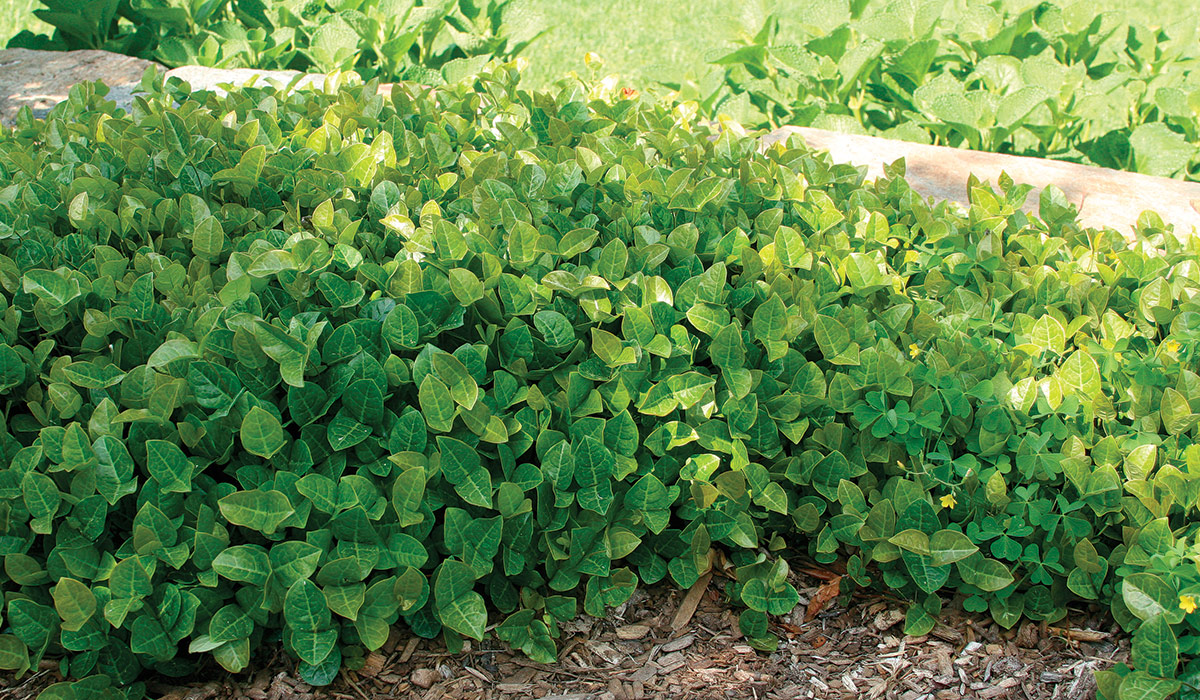
Asian star jasmine
Trachelospermum asiaticum, Zones 7–11
A ground cover that can be grown as a vine? Yes, there is such a thing. Asian star jasmine is extremely adaptable. It can also be utilized for training on topiary forms, in hanging baskets, as a low hedge, or to stabilize steep slopes. It is just as adaptable in its cultural needs as well. Equally happy in full sun to partial shade, the ovate 1- to 3-inch glossy green leaves have a leathery texture to provide interest in all four seasons. Bronze to red coloration may appear in the fall and persist through winter in colder regions. Drought tolerant, salt tolerant, and generally free of pest and disease, it is a tough character. Variety is the spice of life, and it delivers on this front as well. Many cultivars are available in the trade such as ‘Bronze Beauty’, ‘Snow-N-Summer™’, ‘Summer Sunset’, and ‘Variegatum’. Clusters of small, fragrant creamy-white flowers with a subtle hint of yellow emerge in late spring to early summer. Birds enjoy building nests among the dense branching habit. Although a bit slow to establish, once it settles in it can reach heights of 20 feet but also responds well to pruning. Additionally, it combines well with other vines or can find its way nicely through the branches of small flowering trees or large shrubs.
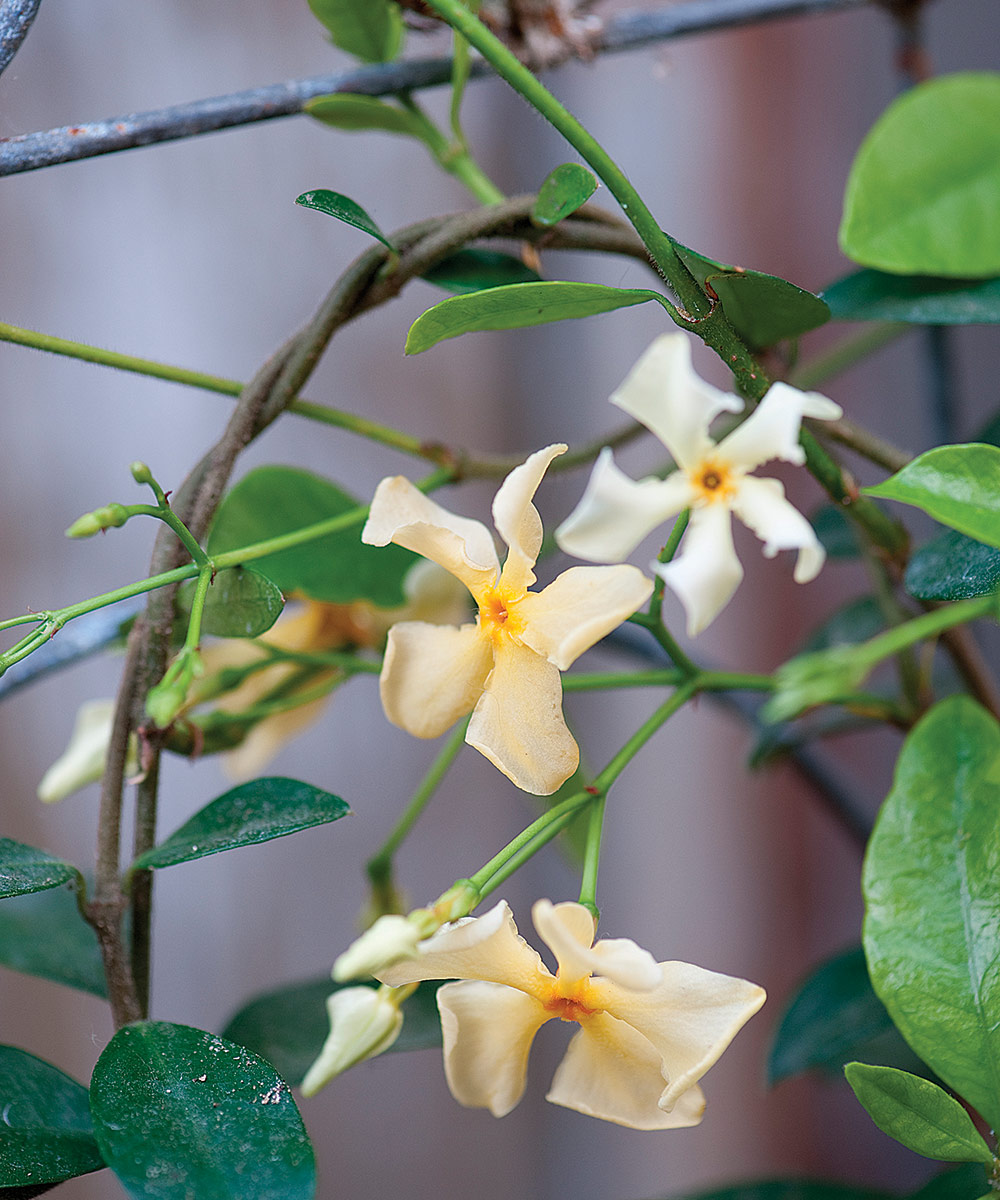
More vines worth growing:
And for more Mid-Atlantic regional reports, click here.
Discuss this and any other gardening topic in our Mid-Atlantic gardening forum.
Adam Glas is a garden supervisor and rosarian at the Scott Arboretum of Swarthmore College in Swarthmore, Pennsylvania.
